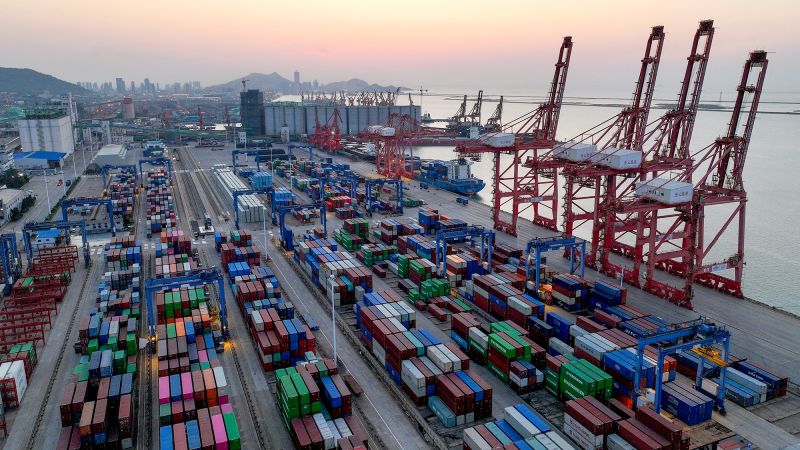In a noteworthy development, President Donald Trump has laid out the negotiating terms for his administration’s inaugural discussions with China, scheduled to take place this weekend in Geneva. His approach reflects the ongoing complexities of U.S.-China relations that have been contentious, particularly in the arena of trade. Trump’s assertion of negotiating terms in advance underlines both his confidence and the high-stakes nature of these impending discussions.
In a series of posts on Truth Social, President Trump delineated his expectations for the upcoming meeting involving crucial figures such as U.S. Treasury Secretary Scott Bessent and U.S. Trade Representative Jamieson Greer, accompanied by their Chinese counterparts. The core of Trump’s demands rest on the belief that China must increase its imports of U.S. goods. In return, he proposes a significant reduction of the current 145% tariff on Chinese imports down to 80%. This proposal, if taken seriously, indicates a potential shift in trade dynamics.
Trump’s spirited narrative declared that “CHINA SHOULD OPEN UP ITS MARKET TO USA — WOULD BE SO GOOD FOR THEM!!! CLOSED MARKETS DON’T WORK ANYMORE!!!” This sentiment captures his essence as a negotiator; he often emphasizes the need for reciprocal arrangements in international trade. In a separate entry, he reiterated his stance by stating, “80% Tariff on China seems right! Up to Scott B,” linking the tariff reductions directly to input from key economic advisors.
The proposed concession to lower tariffs comes at a time when data indicates that shipments from China to the United States have plummeted by as much as 60%. Ryan Petersen, the CEO of Flexport, a prominent logistics and freight forwarding firm, provided insight into the magnitude of this decline. However, even if the tariffs were reduced to 80%, skepticism remains regarding whether such a move would be substantial enough to persuade U.S. businesses back to importing Chinese goods. Economists suggest that a much lower threshold, around 50%, is necessary to restore a semblance of the normal trade relationship that existed prior.
The implications of these negotiations have already begun to manifest, with price increases emerging across various goods due to the ongoing trade tensions. Recently, analysts from Goldman Sachs indicated that a critical measure of inflation is poised to double to 4% by the end of the year, a trend attributed partly to the trade war. It is crucial to note that even with an immediate drop to 0% tariffs, the United States would continue to face price hikes and shortages, a situation exacerbated by the existing supply chain disruptions.
Adding another layer to this narrative, China reported a 21% decline in exports to the U.S. last month, even before the full impacts of existing tariffs could be felt. This statistic underscores the economic ramifications unfolding on both sides of the Pacific. In response to these developments, President Trump has taken a rather unconventional view, stating that he views the decrease in shipments as a positive trend, suggesting that it means the United States is no longer incurring losses in trade. This assertion reflects his frequent but inaccurate assertion that a trade deficit equates to financial losses.
As the situation continues to develop, further updates are anticipated as both nations navigate these challenging negotiations. The outcome of these talks could have lasting implications for global trade dynamics, economic policy, and the economic health of both countries. The overarching theme remains one of cautious optimism amidst an atmosphere of uncertainty, as stakeholders from various sectors await clarity regarding the future of U.S.-China trade relations. With tensions still high and the stakes even higher, this negotiation represents a critical moment in the geopolitical landscape.



